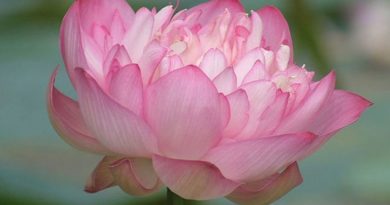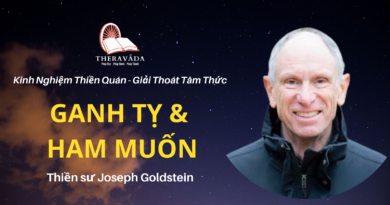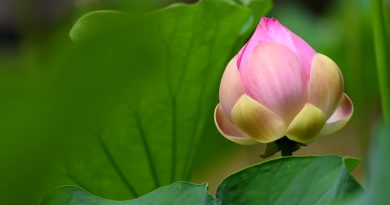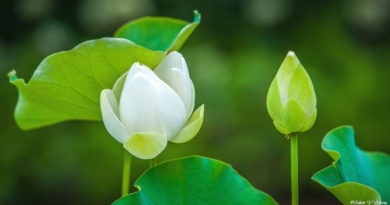SASANA ABROAD – NEW YORK TO SAN JOSE
MAIN CONTENT
SASANA ABROAD
NEW YORK TO SAN JOSE
After the three night dhamma discourse at the Loka-Chantha Pagoda Monastery, Sayadaw, Dr. U Mya Aung and U Tun Kyi left the New York Airport for San Fransico on July 15, 1994 at 10:00 a.m. Daw Khin Khin Gyi, U War Kyu, U Soe Kaw and Dr. Mg Mg Myint were at the airport to meet Sayadaw and his team. Sayadaw and his team arrived at the Tathagata meditation Center, San Jose, 25 miles away from the airport in U Khaws car. At that center, Sayadaw conducted a five-day retreat by giving dhamma talks, instructions on vipassana meditation from 1356, (M.E) 13th waxing day to 2nd waning day of Waso. About thirty yogi participated in the retreat.
Four factors for vipassana meditation
To-day July 20th is the opening day of the five day retreat at the Tathagata Meditation Center. I would like to give a few admonishment and preach on the four factors for vipassana meditation. The vipassana meditation which the listeners of dhamma and the yogi are going to practise, is the most beneficial practice for the present and future life and also for the attainment of the happiness of nibbana.
In vipassana meditation, though yogi practise just observation only, two benefits are achieved. It annihilates the kilesa such as lobha, dosa and moha which lead to apaya and on the other hand it achieves the happines of nibbana by developing mature concentration. For these reasons I exhort you to practise whenever time is available.
The meditators, first and foremost must practise to develop concentration which fosters vipassana wisdom. Ashin Kaccayana explained the four factors for the development of concentration.
(1) Cakkhumassa yatha andho—One must act as a blind person although his eye-sight is good.
(2) Sotava bhadhiroyatha—One must act as a deaf person although his hearing is good.
(3) Pannavassa yatha mugo—One must act as a dumb person although he is wise and good in speaking.
(4) Balava dubbaloriva—One must act as a weak person although he is strong and healthy.
(1) The mediators need not act like blind person in the sitting practice since they have closed their eyes. However in walking practice and general noting practice, concentration will not develop if they look around just as they do while in towns and cities. Then no vipassana wisdom establishes. For that reason they should act like a blind person though their eyesight is good.
Motto: Though eye-sight is good, should act like a blind person.
(2) If the meditators hear all kinds of sound just like in the towns and cities, concentration cannot develop. Hence no establishment of vipassana wisdom. That is the reason why a person with good hearing should act like a deaf person so as to quickly achieve vipassana wisdom.
Motto: Though good in hearing act like a deaf person
(3) When there is no special reason the mediators should not talk, since talking distract concentration. Both the speaker and the listener can lose their concentration. A five minutes’ talk disturbs the concentration for ten minutes. Moreover, the recollection of the talk deters the concentration for five minutes. That is why meditators should act like a dumb person though they are wise and good in speaking.
Motto: Though good in speaking act like a dumb person.
(4) As they are strong and healthy the meditators might act and behave quickly as usual, there upon the noting mind may not be able to keep pace with the bodily movements. If the noting is not right at the present, then concentration will not develop hence no establishment of vipassana wisdom. It is, therefore essential for the meditators to act like a weak person though they are strong and healthy.
Motto: Though strong act like a weak person.
While practising vipassana meditation the bodily movements should be slow like a sick man, then only the noting mind can keep pace with them and the noting to be precisely at the present. When the noting is right at the present, concentration develops. Thereupon the nature of lightness and heaviness, that of pushing and pulling will be apparent. The vividness of nature will lead to the awareness of becoming and dissolution. This awareness will yield the knowledge of anicca (impermanence), dukkha (pain) and anatta (non-self). Then only the most aspired happiness of nibbana will be realised. That is the reason why the meditators should move about like a sick man.
The meditators, the aspirants for magga, phala and nibbana, sons and daughters of good parentage, should guard their eyes, their ears, avoid talking and act softly and slowly.
After practising according to Ashin Kaccayana’s instruction may the listeners be able to immediately realise, their most aspired noble dhamma, namely magga, phala and nibbana, the extinction of all sufferings by easy practice.
Questions and answers.
Beginning from July 21st, two discussion periods were allotted: 9:00 a.m to 11:00 a.m in the morning and 2:00 p.m to 3:00 p.m in the afternoon for every day. Dr. U Mya Aung translated into English for the American and Vietnamese yogi. Some significant questions and answers are mentioned here.
Ashin Nandacara (Vietnamese): I can sit two and half hours continuously. At that time, my bent left leg stretched out automatically. The same thing happened to the bent right leg. Afterwards they bent back by them selves. The hands also stretched out and bent again automatically. Is it in accordance with the dhamma?
Sayadaw, Yes, it is the nature of dhamma. At this stage of insight, the other yogi like Ashin Nandacara, found their legs and arms stretch and bend automatically. This is due to Ubbega Piti (up lifting joy) Many strange things happen. When the concentration is good the body is elevated. Some time legs and hands are raised in different forms as if dancing. Without fear, note these various behaviour attentively and penetratively as “stretching”, “stretching” or “bending bending” accordingly as it happened. Bend your mind towards the dissolution of these various behaviour.
Ashin Sujata (Vietnamese): In walking practice I make three notings in each step as “lifting”, “pushing” and “putting down”. When lifting I’m aware of the lightness, in pushing the awareness of moving, in putting down the awareness of heaviness. Is it dhamma?
Sayadaw, The awareness of lightness, pushing and heaviness is the perception of dhamma. The awareness of lightness and pushing is the perception of the elements of heat (tejo) and motion (vayo) whereas the awareness of heaviness is the perception of the elements of earth (pathavi) and cohesion. (apo)
Ashin Soon (Vietnamese): During the sitting practice I noticed the successive stage in “rising” and “falling”. Moreover there is stopping at the end of “rising” and “falling”. Is it the correct dhamma?
Sayadaw: Yes, it is correct. By dint of strong concentration the successive stages of “rising” and “falling” become apparent. The awareness of the stopping at the end of “rising” and “falling” is the beginning of perceiving the nature of dissolution and that there is “falling” only after the dissolution of “rising”, the rising after the dissolution of “falling”. The discontinuity of “rising” and “falling” is also noted.
Mr. Arthur Hin (American): On July 23rd the noting of “rising”, and “falling” was better then before. When my mind wandered off, I can immediately note it and the wandering mind disappeared. Is that the correct dhamma?”
Sayadaw: It is due to the improvement in observation. That you could note the wandering mind immediately and that it disappears on noting it. It can be said that you have attained the Bhanga Nana Stage, where the dissolution is more vivid.
Daw Lanug Chan (Chinese) (45 years old): I can contemplate the dukkha vedana in my rupa (body) but not those of nama (mind). Moreover, I can perceive ultimate reality and conventional reality separately in my body, however not that of the mind.
Sayadaw: You will be able to observe the dukkha vedana of your mind when your observation is strong. It will be so by noting in succession. You need to practice, with special attention to note the general bodily action. It is perfect to differentiate ultimate reality and conventional reality in the body, how ever you cannot do so with the mind since it is an ultimate realty itself.
The Closing dhamma discourse
On July 24th the closing of the 5 days retreat at the Tathagata mediation Centre, San Jose, Sayadaw delivered a closing dhamma discourse. Dr. U Mya Aung translated into English, while U Virapanno, Vietnamese monk translated into Vietnamese.
As vipassana dhamma flourishes nowadays, the meditation retreat centres were conducted in many places, some for ten days, some for seven days and others for five days. At the end of the retreat, it is a usual practice for the Sayadaws and the monks to give a closing dhamma talk. At the Tathagata Meditation Centre, San Jose, California U.S.A., a five day retreat (20th to 24th July) was conducted and led by Saddhammaransi Sayadaw. On July 24th the closing ceremony was held from 4:00 p.m to 5:30 p.m, where Sayadaw delivered the closing dhamma discourse as requested by the yogi and the devotees. It consists of three parts.
1. To rejoice at the vipassana meditation practice which last for five days.
2. Not to stop contemplating without reaching the destination.
3. To continue noting the general activities.
1. To rejoice by reflecting, “We, indeed, have practised the vipassana meditation which Buddhas, Silent-Buddhas and arahats have practised and realized nibbana. Indeed, we have followed the path trodden by Buddha, Silent Buddha and arahats. It is evident that one day we too will realise nibbana like Buddha, Silent-Buddha and arahats.” The vipassana meditation is the most beneficial practice, therefore if you want to make the best use of your extra time, practise satipatthana vipassana. In satipatthana practice, the only work is to observe, however, two benefits are gained. One benefit is the elimination of lobha, dosa and moha which send one to apaya and the other one is the strengthening of concentration which leads to the attainment of the happiness of nibbana. By virtue of satipatthana practice each and every noting keeps away the sufferings in apaya and makes nibbana to be nearer and nearer. It is beneficial because it can fulfil our aspiration, we make every time we perform kusala deeds, such as “May we be free from the danger of apaya. May we attain nibbana speedily” For these reasons you should rejoice at the vipassana meditation. The satipatthana vipassana meditators can make at least one noting per second, sixty notings per minute and thirty-six hundred per hour. The average total noting hour per day is about fourteen hours, therefore during five days the total hours of noting is seventy hours. Thus there are two hundred and fifty two thousands notings in five days. These are the kusala deeds which will lead to the happiness of nibbana. That is the reason why it is to rejoice at the vipassana meditation practice.
2. After leaving the meditation centre at the end of the five day retreat when you do not continue noting, your time will be used up by worldly affairs. Thereupon you would lose the noble dhamma which you should gain in this life. It is, therefore, advisable not to stop noting till the destination is reached. The Atthakatha masters explained “antaraca abyosanena” meaning, “before reaching the end, that is magga, phala and nibbana, one should not discontinue noting.”
Motto: Do not surrender half-way, continue till you reach the destination.
There are four conditions which are difficult to attain:
(1) to be a human being
(2) to be alive
(3) to be able to listen to the noble dhamma, and
(4) to be in the presence of Buddha’s Sasana.
Nevertheless in the very present life you are a man, you are alive, you can listen to the noble dhamma and lastly you exist in the presence of Buddhas Sasana. Consequently you can attain or reach the ultimate goal, that is magga, phala and nibbana. Accordingly you should continue noting even though you are not at the meditation center. The ultimate goal for the yogi and the listeners of dhamma are:—
(1) The nibbana which can be realised by sotapatti magga nana and sotapatti phala nana.
(ii) The nibbana which can be realised by sakadagami magga nana and sakadagami phala nana.
(iii) The nibbana which can be realized by anagami magga nana and anagami phala nana.
(iv) The nibbana which can be realized by arahatta magga nana and arahatta phala nana. Out of these four ultimate goals, you should strive at least to gain the nibbana by means of sotapatti magga nana and sotapatti phala nana.
3. At the end of the five day retreat when you go home you should continue to note the bodily actions or general notings in walking, standing, sitting and lying down, which will lead you to the ultimate goal, nibbana. The general noting is the sampajanna noting as pointed out by Lord Buddha. Sampajanna means the noting of the various bodily actions while walking, standing, sitting and lying down so as to understand them rightly.
“Abhikkante patikante sampajanakari hoti”
The Buddha first and foremost instructed us to note the forward and backward moving bodily actions so as to know them rightly. The forward and backward moving bodily actions are;—
(a) Forward and backward moving bodily actions in walking.
(b) Forward and backward moving bodily actions in standing
(c) Forward and backward moving bodily actions in sitting
(d) Forward and backward moving bodily actions in lying down.
(a) The forward and backward moving bodily actions are more distinct in the walking practice. Noting ‘lifting’, ‘pushing’, ‘dropping’, you walk foreword, that is the forward moving bodily action. At the end of the corridor you turn around that is the backward moving bodily action. While noting ‘lifting’, ‘pushing’, ‘dropping’ according to sampajanna noting it is to note the bodily actions. However the Exalted One had allowed us to note whatever was more apparent. While noting ‘lifting’, ‘pushing’, ‘dropping’, the forward bodily actions performed and at the end of the corridor you stop for a while and turn back. That is the backward bodily action. At that moment if you are more attentive you will notice the intention to turn back. Then note ‘intend to turn, ‘intend to turn’ when the body begins to turn around the bodily actions are made, then only note ‘turning’, ‘turning’. Two stages of insight are achieved when the intention to turn around is perceived. The intention to turn is the conscious mind, nama and the turning bodily action is the unconscious corporeality, rupa. This distinction of nama and rupa is the Namarupa pariccheda Nana. The bodily turning actions are performed due to the intention to turn. The intention to turn is the conscious mind, and the cause of turning action. The turning action is the effect of the intention. Thus the Paccaya pariggaha Nana, the knowledge of differentiating the cause and effect. Thus two stages of nana is attained.
(b) The forward moving action while standing is apparent in bending down movement and the backward moving action in straightening up movement. The intention to bend can be clearly perceived if you are mindful when you have to bend down to do something. Thereupon note ‘intend to bend’ ‘intend to bend’. When the body bends then note ‘bending’, ‘bending’. The noting mind is consciousness, therefore it is nama, the bent body is the corporeality, therefore it is rupa. The Namarupa paraccheda Nana is achieved. The intention to bend is the cause and the bending action is the effect. The knowledge of distinction between cause and effect, Paccaya pariggaha Nana is attained.
When things are done, you want to straighten up. If you are mindful you will be aware of the intention to straighten up. Then note ‘intend to straighten up’, ‘intend to straighten up’. When the actual bodily straightening action appears, note ‘straightening up’, ‘straightening up’. The intention to straighten up is the conscious mind, nama and the straightening body is the corporeality rupa. The Namarupa parriccheda Nana is achieved. The intention is the cause and the actual bodily action is the effect. Thus you gain the Paccaya pariggaha Nana.
(c) The forward and backward movement in Sitting is more lucid in paying homage to the Buddha. Before bending to pay homage if you are mindful you will be aware of the intention to bend, Then note ‘intend to bend’, ‘intend to bend’. When the actual bending, (the forward movement), occurs note ‘bending’, ‘bending’. When the Paying homage behaviour is performed note ‘paying homage’, ‘paying homage’. The intention to homage is the conscious mind, nama and the behaviour to pay homage is the corporeality rupa.
Thereupon the Nama-rupa pariccheda Nana is attained. The intention to pay homage is the cause and the actual paying homage action is the effect. Thus the Paccaya pariggaha Nana is attained.
After paying homage, if you are attentive, you will be aware of the intention to straighten up. Then note, ‘intend to straighten up’, ‘intend to straighten up’. When the straightening up action appears note ‘straightening’ ‘straightening’. The Nama-rupa pariccheda Nana is reached when the distinction between the intention, the conscious mind, nama and the straightening body, the corporeality, rupa is discerned. The Paccaya pariggaha Nana is achieved when the intention to straighten and the straightening bodily action are differentiated as the cause and effect.
(d) The forward moving action in lying down is the behaviour of lying down from the sitting posture. The backward moving action in lying down is the behaviour of getting up. When you are about to lie down from the siting posture, the intention to lie down will be apparent if you are mindful. Then note ‘intend to lie down’, ‘intend to lie down’. When the lowering behaviour of the body happens then note ‘lying down’, ‘lying down’.
The Namarupa pariccheda Nana is attained when you notice the intention as the conscious mind, nama and the bodily action as the corporeality rupa. Moreover, you gain the Paccaya pariggaha Nana when the cause (i.e. the intention to lie down) and the effect (the bodily action) are separately understood.
After lying down you want to get up. The intention to get up will be lucid if you are mindful. Then note ‘intend to get up’, ‘intend to get up’. When the body is raised then note ‘getting up’, ‘getting up’. The Nama-rupa pariccheda Nana is achieved when you perceive the intention, the conscious mind as nana and the bodily action as matter, rupa. When you discern the intention as the cause and the bodily action as the effect, you certainly have reached the Paccaya pariggaha Nana.
The attainment of Namarupa pariccheda Nana and Paccaya pariggaha Nana by contemplating the intention to move forward backward and so on, will yield the benefit of a rebirth in desirable existence such as human world and celestial realm. The Atthakatha masters claim this as Cula Sotapanna, a junior sotapanna.
After meditations for five days at the Tathagata Meditation Center, you have listened to the dhamma talk on (1) To rejoice (2) To continue the contemplation, and (3) To note the general bodily actions. May you be capable of practising accordingly and, speedily realise your most aspired noble dhamma, Nibbana, the cessation of sufferings of whatsoever nature by easy practice.







